Grandma was just one out of 6 million French children who lost their fathers. Her mother had a small sewing shop in Southern France, specializing in widows' dresses, by far the most popular garment at the time.
When she was in her 30s, my Grandma also lived through WWII, and in 1945, she went to Germany with her husband, a military man who was part of the French occupation forces that were stationed there until the 1960s.
Grandma didn't like living with Germans; they reminded her of her lost father. She still doesn't like the Germans much. I guess she never thought about the fact that both German and French soldiers were used as cannon fodder, manipulated into fighting wars that profited only the heartless, greedy politicians and bankers.
One could reasonably argue that during her long life, Grandma, like many of her contemporaries, experienced the full horror of the 20th Century and the steady devolution of humanity.
I love my Grandma dearly. She's the one who raised me when I was a kid and now I'm the one taking care of her. I go to her retirement home frequently. I was there a few days ago and, since she can't read much by herself any more, I read her excerpts from various writings.
Grandma particularly enjoys Point de Vue (literally 'Point of View'), the French magazine about the nobility and royal families. I don't know why she loves royalty so much. Maybe it reminds her of a long forgotten time when ethics, dignity, respect, beauty or courage still meant something.
The first article in Point de Vue's latest issue was about Camilla Parker Bowles. When I asked Grandma if she knew who Camilla was, she told me that Camilla had been Prince Charles' mistress for years and that, after Diana's death, she took her place.
My Grandma is not very fond of Camilla, the illegitimate mistress, but she loves Diana, the legitimate Princess, very much. One day she mentioned, en passant, that she didn't think Diana died in an accident, but that she was rather the victim of an assassination. I have no idea where she picked up on that idea, but obviously, despite her venerable age, Grandma can be surprisingly sharp.
Since neither of us are great fans of Camilla, we quickly skipped this article and reached the auction section in which the photo of four items were presented (see next picture).
On the bottom left of the page is a sculpture representing a Roman emperor. It is made of agate and mounted on a gilded bronze base. This fine piece of art, that obviously required hours of work from a highly skilled artist, was crafted in the beginning of the 19th Century and has just been sold for €20,130 (about $27,000).
On the bottom right is an ornamental chair made of hand-sculpted precious wood. It is fully gilded and hand-painted. It includes a roof mounted on an arch supported by columns. This piece of art was created in two phases in the 16th and 19th Centuries. So the oldest parts are half a millennium old. Its estimated price ranges between €18,000 and €22,000 (between $26,000 and $30,000).
On the left is an oil painting on canvas made in the 17th Century by a member of the Genovese school. It is titled 'portrait of a woman with a fan and her son'. It is mounted on an hand-sculpted, fully-gilded frame. Its estimated price range is €8,000-€12,000 (about $15,000).
The fourth picture, on top of the page, is a series of self-portraits made in the 1960s by Andy Warhol. It contains six replicas of the same picture. Only the colors change. Where are the endless hours of skilful work? Where is the beauty? Where is the art? Where is the creation?
In any case, the value of this set of pictures is estimated between 18 and 25 €million. Yes, you read that right. That is approximately $30 million. It is valued one thousand times more than the ancient pieces of fine art described above.
Imagine what you could do with €30 million; how many lives you could save, how many people you could help, how many dreams you could make come true, how many true pieces of real art you could save from oblivion.
But, apparently, in our world some people prefer to spend such a huge amount of money on the artless, soulless self-portrait of an individual, Andy Warhol, who, when he was not shooting pictures of himself, was producing gay pictures and movies, was repeatedly involved in plagiarism, and was considered by many to be the one who transformed art into little more than mindless consumerism.
Sadly, this auction page reveals a very clear sign of the times. In the past, individuals invested their energy, skill, and faith in the quest for art and beauty. Today all that has been lost; so-called modern art proposes canned excrement, crucifixes in urine, and vomit on canvas to discerning art aficionados.
Self-described 'art critics' spend endless hours trying to imbue such 'art' with convoluted philosophical meaning so that 'art collectors' will shell out large sums of money for them, and ignore genuine ancient pieces of art that required skill, dedication, fervor and mastery to produce. If money is indeed energy, it says quite a lot about the value, or more likely, the absence of values, conveyed by our 'modern' society.
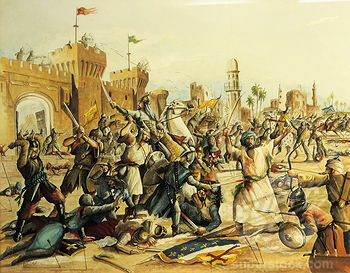
The death of his companions didn't deter him from his religious zeal and fanaticism however, and a few years later he led the 8th crusade, which was short-lived since most of the troops got sick soon after reaching the African continent, including Louis, who died from dysentery in Tunis.
The destruction of his whole army and his obsession with eradicating any living Saracen was rewarded by the Catholic church. Louis was canonized in 1297.
Coincidentally Louis IX was the patron of art and during his reign numerous Gothic cathedrals were erected. One of these Gothic testimonials is the Rodez cathedral, which appeared in the last Point de Vue article Grandma and I read.
In the background (symbolic of the past), you can see Rodez Cathedral. An elegant Gothic creation made of natural stones delicately crafted by skilled artisans. The monument radiates balance, harmony, beauty. Its long tower soars from the Aveyron ground up towards the sky, mirroring, perhaps, the perennial human quest to find and reach 'heaven' and connect with the divine, immanent spark.
Even though the individuals who sacrificed their whole life to this ambitious project were not much more than slaves, they were, at least, animated by this spiritual belief and hoped to serve God, or something greater than themselves.
In contrast, we see in the forefront (the present) the brand new (but already rusted) Soulages Museum. A morbid steel box. You'll find no skill, no soul, no beauty, no inspiration there. Just a hideous piece of rust standing in front of the Rodez Cathedral, like the ultimate insult, the ultimate torment inflicted upon the eight-centuries-old masterpiece behind it.
In antiquity, slaves knew they were slaves and they were provided with food, clothes and shelter. Despite their 'worker' status, the men who built Soulages Museum are also slaves, but slaves who believe they are free, their miserable 'wages' barely enough to allow them a decent life. And of course, they are led to believe they are creating 'art' rather than a hideous metal rust bucket.
In France alone, 15,000 workers are homeless. In the US, a staggering 80% of the population is close or below the poverty level, even though a lot of these individuals do have a job, or even two or three.
And, unlike medieval slaves, the modern ones no longer have any moral or spiritual guidance to sustain them. They've been robbed of their last parcel of hope: the faith in God and in good. A godless, valueless, materialistic, consumerist, individualist ideology had been imposed upon their minds.
The construction of the Soulages Museum was funded with €25 million of tax-payers money (about $30 million). This is the same amount as someone paid for Warhol's 'art'. In 2014, this is where countless $millions go in the service of 'art': into a rusty metal box or a pathetic series of self-portraits of a deranged individual.
The destruction of art is not due merely to chance. The psychopathic elites want to exert total control over every one of us. To achieve their goal they need us to be as ignorant and isolated as possible, hence the concerted annihilation of cultural references like true art, good education, objective history and open-minded science, and the eradication of what infuses a sense of community: religion, ethnicity, nation-state, and family.
Because the psychopathic elite are devoid of conscience and creativity, they are unable to forge their own identity. Indeed, they are literally unable to truly understand, and therefore appreciate, the idea of an abstract identity, the very thing by which groups of normal human beings define themselves. To psychopaths, normal humans appear to be "not quite conspecific" as Andrew Lobaczewski states. That is to say, to psychopaths, normal humans appear 'abnormal', their abstract ideologies ridiculous 'aberrations', and they seek to force the world and its normal human population to submit to their own inhuman nature and vision of 'reality'. By depriving us of any kind of cultural landmark, they want to strip us of the last parcels that makes us truly human: our collective innate understanding of, and admiration for, truth, justice, and beauty.
Don't worry, I spared Grandma these musings. At her age, she deserves some peaceful time with her grandson. I did wonder though, seeing beauty trumped by trash in that glossy A-list magazine; where now does all the creative energy go that once went into such art?
I guess the answer is tragically simple: If there is no creation without, there is destruction within.
If we cannot manifest creative energy on the outside, it will remain trapped inside us and produce anger, frustration, sadness or suffering. Eventually this emotional stress can build up and materialize into dis-eases, the way our body says no to the suppression of our creative energy.
The concerted effort to destroy traditional landmarks like family, education or religion certainly deserves further analysis, so I hope to return to the topic in follow-up articles.
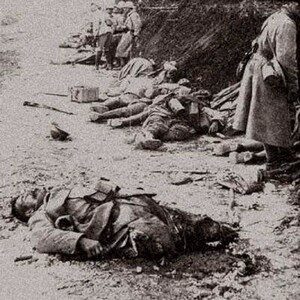
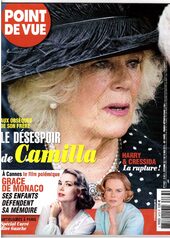
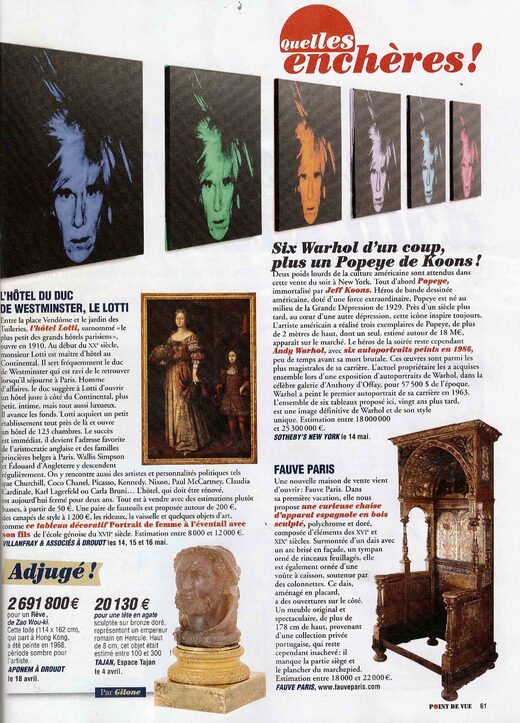
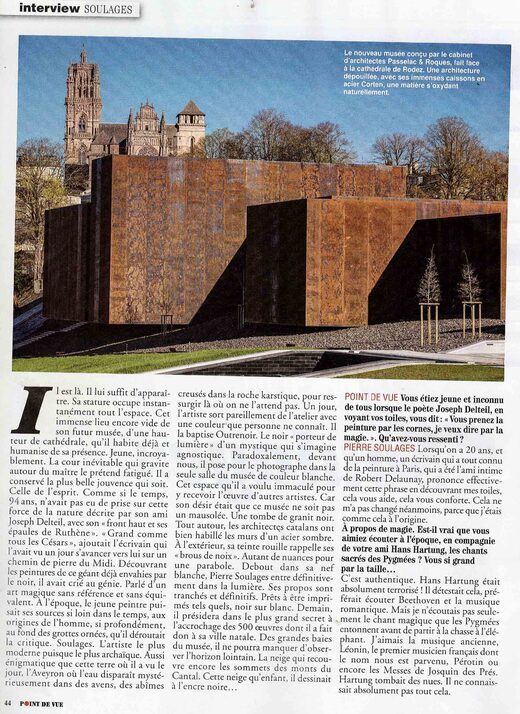
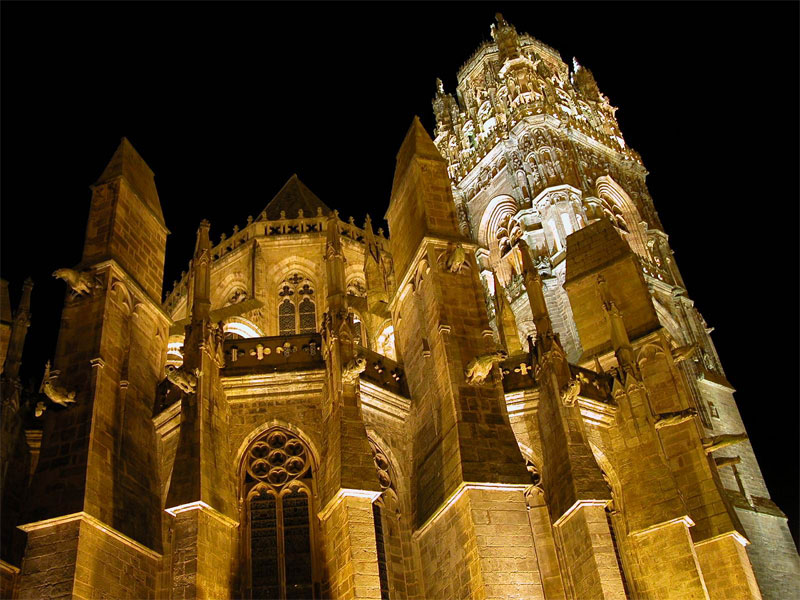



...of forthcoming articles on this website then I am really looking forward to read those. Thank you, Pierre. An enlightening piece of writing, with human touch to it and still very SoTTy.